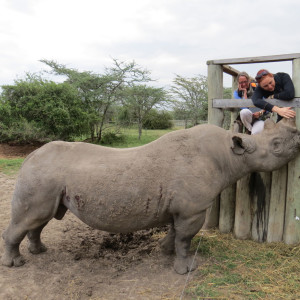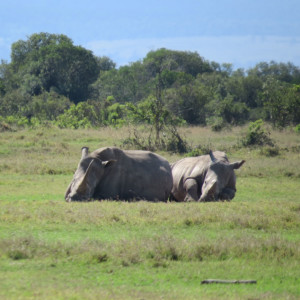NEW INSIGHTS INTO THE CONSUMERS BEHIND RHINO POACHING
NEW INSIGHTS INTO THE CONSUMERS BEHIND RHINO POACHING
The use of rhino horn as a symbol of status among wealthy urban Vietnamese has been identified as a major driver of the current rhino poaching crisis. Findings from consumer research – concluded earlier this year in Vietnam – has added significantly to our understanding of why a growing economy and emergence of a middle class with disposable incomes, is pressuring African rhino populations.
Funded by WWF South Africa (WWF-SA) and co-ordinated by TRAFFIC’s Greater Mekong Programme Office – this research surveyed 720 people in Hanoi and Ho Chi Minh City. It found that the buyers and users of rhino horn primarily consider it a status symbol – often used to gift to family members, business colleagues or people in positions of authority. They also associate it with a feeling of ‘peace of mind’.

“Rhino horn consumers are wealthy and powerful and as such are seen as influential people within Vietnamese society,” says Dr Jo Shaw, WWF-SA’s Rhino Co-ordinator. She adds, “While their reasons for purchasing and consuming rhino horn are linked to an underlying belief in its medicinal properties there is a current trend of use to enhance social standing.”
Shaw further explains, “Research reveals that typical users of rhino horn are successful, well-educated men, over the age of 40 who live in Viet Nam’s main urban centres. They value their luxury lifestyle, which is often based around meeting peer group pressures and tend to view animals as commodities to serve functional and income-generating purposes rather than feeling an emotional connection”.
Perhaps the most significant finding is the fact that beyond current consumer groups lies a large “intender” group: people who are not currently buying or using rhino horn, but who expressed their intent to do so in future. Dr Naomi Doak of TRAFFIC’s Greater Mekong Programme says, “Intenders want to become buyers and users of rhino horn as it is favoured and valued by those they want to impress. They have already made a conscious decision to purchase rhino horn even though they know it is illegal.”
Doak adds, “We need a combination of enhanced law enforcement and demand reduction campaigns to shift attitudes and behaviour against the trend in rhino horn use within the growing middle-class in Viet Nam – without changing the situation in the end user market the pressure on rhinos will continue to inflate. Our new insights on what is driving demand will allow the most targeted and influential response to dissuade consumption”.

Dr Morné du Plessis, WWF-SA’s CEO concludes, “Understanding and influencing the drivers of rhino horn demand in end-user markets – such as Viet Nam – forms a fundamental part of WWF-SA’s five-point strategic framework to address the dramatic increase in rhino poaching and combat the threat to rhinos. This pioneering consumer research will help us achieve these goals, as the fight against rhino poaching will ultimately be won in Asia, not Africa.”
FACT BOX:
TRAFFIC, the wildlife trade monitoring network, works to ensure that trade in wild plants and animals is not a threat to the conservation of nature. TRAFFIC is a strategic alliance of IUCN and WWF.
WWF is one of the world’s largest and most respected independent conservation organisations, with almost 5 million supporters and a global network active in over 100 countries. WWF’s mission is to stop the degradation of the earth’s natural environment and to build a future in which humans live in harmony with nature, by conserving the world’s biological diversity, ensuring that the use of renewable natural resources is sustainable, and promoting the reduction of pollution and wasteful consumption.
